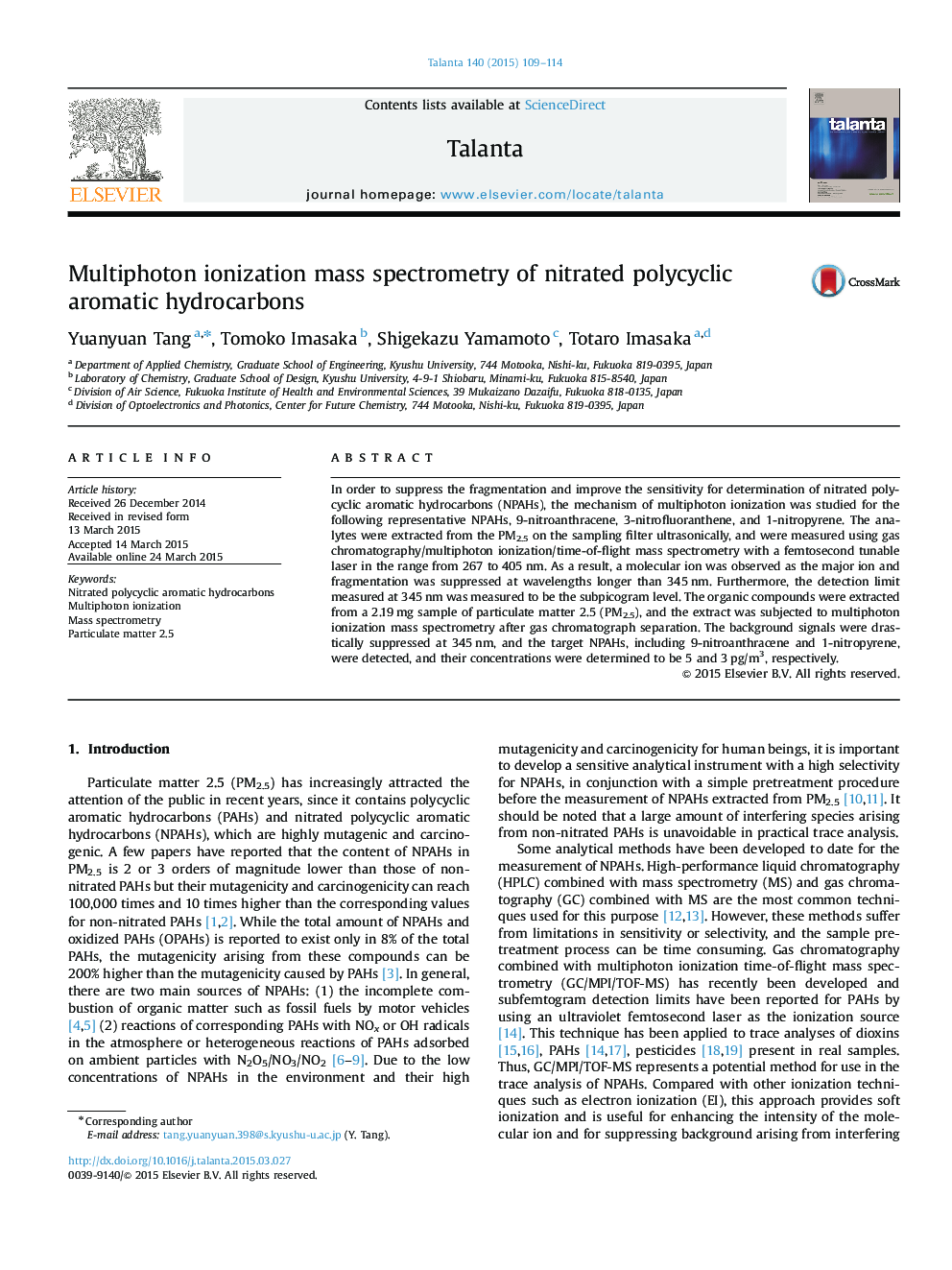| Article ID | Journal | Published Year | Pages | File Type |
|---|---|---|---|---|
| 1243065 | Talanta | 2015 | 6 Pages |
•The optimal wavelength for sensitive detection of NPAHs was determined to be 345 nm.•The detection limits for NPAHs were in the subpicogram levels.•Resonance-enhanced three-photon ionization was useful for observing molecular ions.•Amounts of 9-nitroanthracene and 1-nitropyrene in PM2.5 were successfully measured.
In order to suppress the fragmentation and improve the sensitivity for determination of nitrated polycyclic aromatic hydrocarbons (NPAHs), the mechanism of multiphoton ionization was studied for the following representative NPAHs, 9-nitroanthracene, 3-nitrofluoranthene, and 1-nitropyrene. The analytes were extracted from the PM2.5 on the sampling filter ultrasonically, and were measured using gas chromatography/multiphoton ionization/time-of-flight mass spectrometry with a femtosecond tunable laser in the range from 267 to 405 nm. As a result, a molecular ion was observed as the major ion and fragmentation was suppressed at wavelengths longer than 345 nm. Furthermore, the detection limit measured at 345 nm was measured to be the subpicogram level. The organic compounds were extracted from a 2.19 mg sample of particulate matter 2.5 (PM2.5), and the extract was subjected to multiphoton ionization mass spectrometry after gas chromatograph separation. The background signals were drastically suppressed at 345 nm, and the target NPAHs, including 9-nitroanthracene and 1-nitropyrene, were detected, and their concentrations were determined to be 5 and 3 pg/m3, respectively.
Graphical abstractFigure optionsDownload full-size imageDownload as PowerPoint slide
